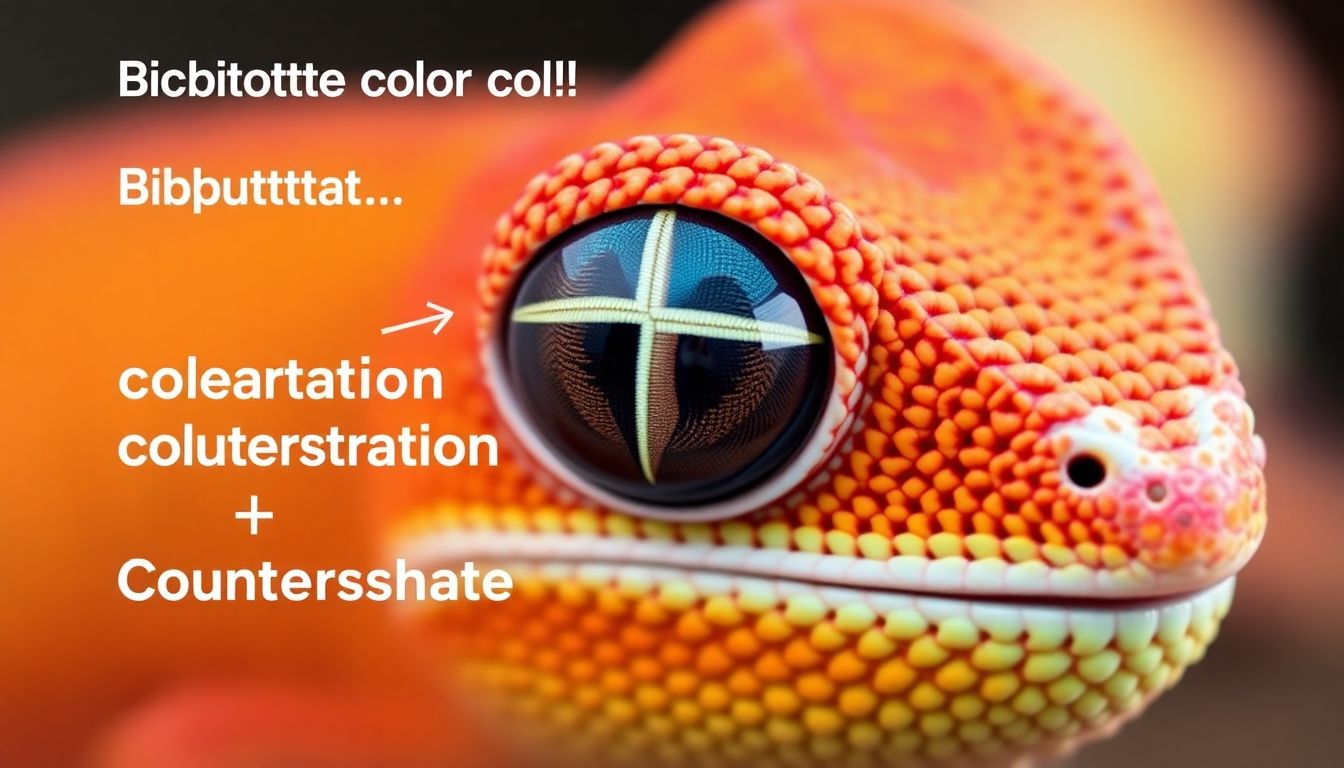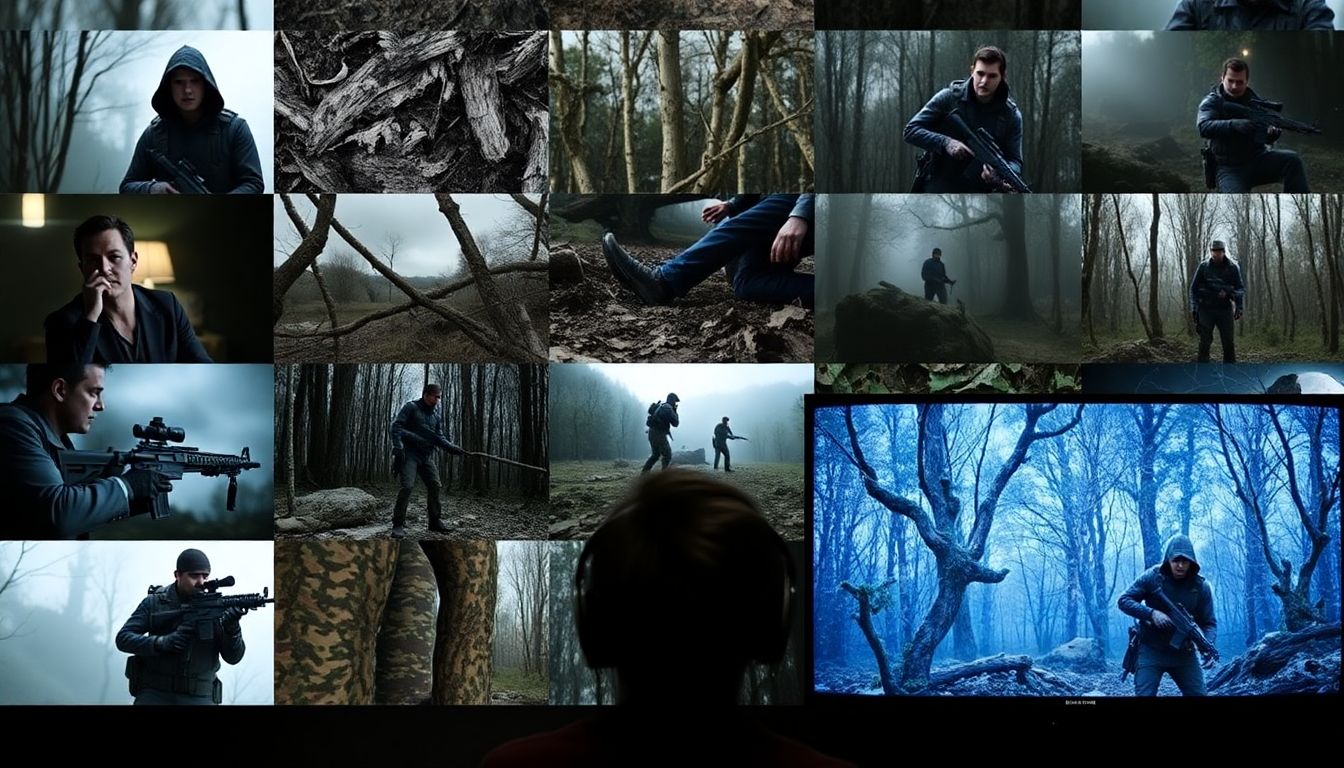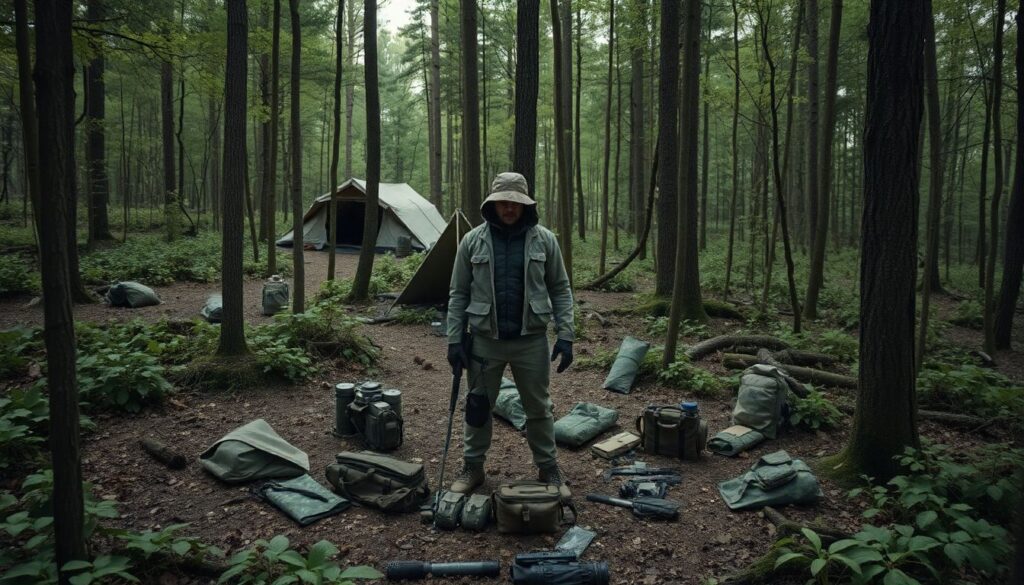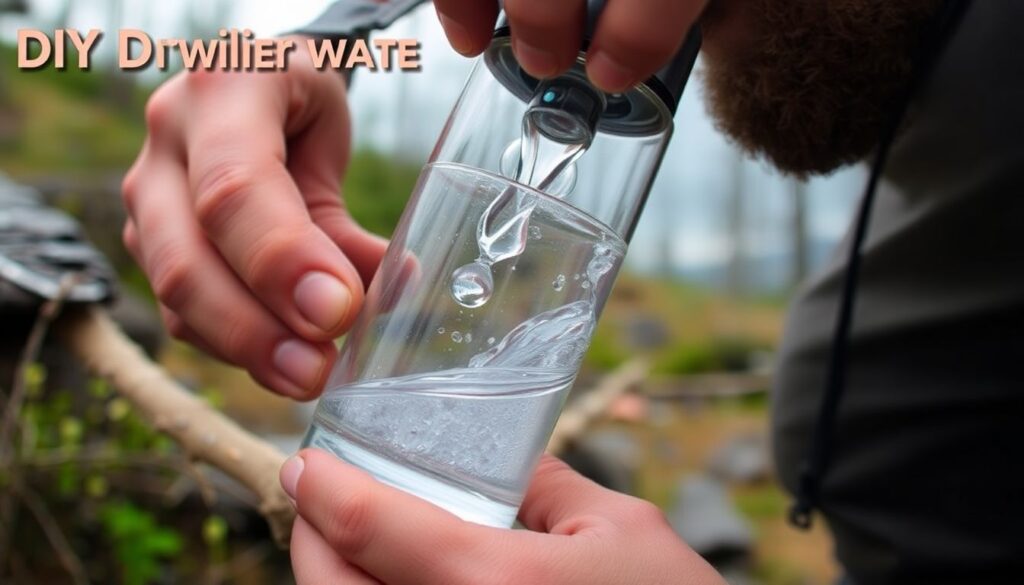Have you ever wondered how a tiny chameleon can disappear into its surroundings, or how a skilled soldier can vanish into thin air, even in the most desolate landscapes? The answer lies in the art of camouflage, a survival skill that has evolved from the animal kingdom to the human world, proving to be an invaluable tool in various situations. In this comprehensive guide, we delve into the fascinating world of survival camouflage, exploring the science behind it, the techniques that make you virtually invisible, and the tactics that could mean the difference between being found and remaining hidden. So, buckle up as we embark on this journey to master the art of blending in, because in survival situations, the ability to conceal yourself could be your greatest asset.
In the vast expanse of the natural world, camouflage is not just a survival strategy, but a way of life. From the polar bear’s white coat that blends into the Arctic ice to the octopus’s remarkable ability to mimic its surroundings, animals have honed their camouflage skills over millennia. But humans, with our unique ability to learn and adapt, have taken this art to a whole new level. From ancient warriors to modern-day survivalists, the practice of camouflage has been refined and perfected, transforming from a mere survival skill to a critical component of military strategy and outdoor recreation.
But why is camouflage so important, you ask? The answer is simple: it provides a tactical advantage. In survival situations, being able to blend into your surroundings can mean the difference between life and death. It can help you avoid detection by predators, evade hostile encounters, or even gain a strategic edge in a survival challenge. According to a study by the U.S. Army, a well-camouflaged soldier is 3.5 times more likely to avoid detection than one without camouflage. Imagine the odds in your favor when you can effectively disappear into your environment.
So, what can you expect to gain from this article? By the end of this comprehensive guide, you will have a solid understanding of the science behind camouflage, the various types of camouflage patterns and their applications, and the stealth techniques that will help you master the art of blending in. We will delve into the psychology of perception, explaining how our brains process visual information and how you can exploit these processes to your advantage. You will learn about the importance of color, shape, and texture in creating effective camouflage, and how to apply these principles in different environments. We will also explore the role of movement and behavior in maintaining concealment, and provide practical tips on how to choose and use camouflage gear.
But this is not just a theoretical exploration. We will also provide real-life examples and case studies, drawing from the experiences of survival experts, military personnel, and outdoor enthusiasts. We will discuss the role of camouflage in historical conflicts, and how modern technology has revolutionized the way we approach concealment. Whether you’re a seasoned survivalist, a curious outdoorsman, or a military enthusiast, this article promises to equip you with the knowledge and skills you need to become a master of camouflage.
So, are you ready to step into the shadows, to become one with your surroundings, and to harness the power of invisibility? Then read on, for we are about to embark on a journey that will transform you from a visible target into a ghost in the machine. Welcome to the art of camouflage.
Mastering the Art of Camouflage: Your Stealth Survival Guide
In the grand theater of nature and survival, few arts are as captivating and essential as the art of camouflage. This stealthy craft, honed by millennia of evolution and perfected by the ingenuity of humankind, is not merely about blending into the background; it’s about becoming one with your surroundings, a chameleon among chameleons. Imagine, if you will, the humble leaf insect, its exoskeleton a masterclass in disguise, mimicking the very foliage it calls home. Or consider the cuttlefish, a marvel of marine mimicry, capable of shifting its skin’s texture, color, and even pattern to mirror the environment around it. These are the masters of their craft, and we, too, can learn from their example. In this guide, we delve into the fascinating world of camouflage, exploring the science behind it, the techniques employed by the animal kingdom, and the practical applications for our own survival. From understanding color theory to harnessing the power of disruptive patterns, from mastering the art of stillness to utilizing natural cover, we’ll equip you with the tools to become a master of stealth. So, whether you’re an avid hiker seeking to observe wildlife undetected, a survival enthusiast preparing for the unexpected, or simply a curious mind eager to unravel the mysteries of nature’s greatest tricksters, join us on this journey. Together, we’ll learn to master the art of camouflage and become, for a moment, invisible to the world around us.

Understanding Camouflage
Camouflage, a term derived from the French ‘camoufler’, which means to disguise or to mask, is a fascinating phenomenon that plays a crucial role in the survival of numerous species. It is the art of blending into one’s surroundings, making an organism less visible to predators or prey. The science behind camouflage is rooted in the principles of light, color, and pattern perception by the human and animal eyes. The effectiveness of camouflage lies in its ability to disrupt the visual system’s ability to detect and recognize objects. This is achieved through three primary types of camouflage: disruptive coloration, countershading, and masquerade. Disruptive coloration is the most common form of camouflage, where an animal’s color and pattern break up its outline, making it harder for predators or prey to recognize it as a distinct object. For instance, a zebra’s stripes disrupt its outline, making it difficult for predators to single out a specific target. This is further enhanced by the fact that the stripes create a sense of depth and motion, confusing predators and making it harder for them to judge the zebra’s distance and speed. Countershading, on the other hand, involves an animal having a darker color on the top half of its body and a lighter color on the bottom. This is because light from above is scattered and appears darker, while light reflected from below appears lighter. This gradient of color makes the animal appear flat, reducing its visibility. Many marine creatures, like the great white shark, use countershading to blend into the ocean’s light gradient. Masquerade, the third type of camouflage, involves an animal mimicking another object or organism to avoid detection. This could be a leaf insect that resembles a leaf, or a mimic octopus that can imitate various species of fish. The success of masquerade depends on the animal’s ability to not only look like the object it’s mimicking but also to behave like it. In survival situations, understanding and utilizing camouflage can be a matter of life and death. It can help humans hide from predators, avoid detection by enemies, or even protect oneself from dangerous wildlife. Moreover, the principles of camouflage have inspired numerous technological advancements, such as the development of stealth aircraft and military uniforms. However, the effectiveness of camouflage is not absolute. It can be defeated by changes in light, movement, or the observer’s attention. Therefore, it’s not just about blending in, but also about understanding the environment and the observer’s perception. After all, as the old adage goes, ‘the best hiding place is often in plain sight’.

Choosing the Right Camouflage Pattern
Choosing the right camouflage pattern is a critical decision that can significantly impact your visibility and safety in various environments. Camouflage patterns have evolved over the years, with different designs serving specific purposes. Let’s delve into the world of camouflage, exploring various patterns, their advantages and disadvantages, and how to select the perfect one for your needs.
The most common camouflage patterns can be categorized into three main types: woodland, desert, and universal.
Woodland Camouflage is designed for use in dense foliage and forests. Patterns like the US Army’s Universal Camouflage Pattern (UCP) and the MultiCam pattern used by the US Army Special Forces are examples of woodland camouflage. UCP, with its blend of green, brown, and beige, was intended to provide a universal pattern for various environments. However, it faced criticism for its lack of effectiveness in real-world scenarios. MultiCam, on the other hand, features a complex blend of colors and shapes, making it highly effective in a wide range of environments, from forests to urban areas.
Desert Camouflage is characterized by its light colors and sparse patterns, designed to blend in with sandy and rocky terrains. The US Marine Corps’ MARPAT and the British Armed Forces’ Desert DPM are prime examples. MARPAT, with its distinctive tiger stripe pattern, provides excellent camouflage in desert environments, while Desert DPM’s subtle, small-scale pattern works well in both desert and urban settings.
Universal Camouflage patterns aim to provide adequate camouflage in a variety of environments. The Canadian Armed Forces’ CADPAT and the German Armed Forces’ Flecktarn are notable examples. CADPAT’s unique blend of colors and patterns makes it effective in both woodland and urban environments, while Flecktarn’s distinctive ‘speckled’ pattern provides excellent camouflage in a wide range of terrains.
When choosing a camouflage pattern, consider the following steps:
- Understand Your Environment: Different environments require different camouflage. Forests, deserts, urban areas, and open fields all have unique characteristics that require specific camouflage patterns.
- Consider the Season: Camouflage patterns designed for summer may not be effective in winter, and vice versa. Opt for patterns that can adapt to different seasons or choose patterns specifically designed for the season you’ll be in.
- Think About Your Activities: If you’re planning to be in open fields, a pattern with large, distinct shapes might work well. However, if you’re moving through dense foliage, a pattern with smaller, more intricate details might be more effective.
In conclusion, choosing the right camouflage pattern involves understanding your environment, considering the season, and thinking about your activities. Whether you’re a soldier in a combat zone or a hunter in the woods, the right camouflage pattern can make all the difference in your visibility and safety.

Understanding Your Environment
Understanding your environment is not just about knowing your way around; it’s a crucial aspect of effective camouflage, a skill that’s not only vital for survival in the wild but also has applications in various fields like photography, wildlife observation, and even fashion. The key to successful camouflage lies in observing and mimicking the natural patterns, colors, and textures of your surroundings.
Firstly, let’s talk about observation. To understand your environment, you need to be a keen observer. Look around, notice the colors, the patterns, the textures. Every environment has a unique color palette. For instance, in a forest, you’ll find shades of green, brown, and earthy tones, while a desert is dominated by hues of beige, sand, and rust. The patterns too vary greatly. Leaves have intricate vein patterns, bark has rough textures, and water has ripples and reflections.
Once you’ve observed these details, the next step is to mimic them. This is where the art of camouflage comes into play. If you’re in a forest, wear clothing that’s green and brown, and has patterns that mimic the texture of tree bark or the veins on leaves. If you’re in a desert, opt for earthy tones and patterns that mimic the sand dunes or the rough texture of rocks.
Remember, the goal is not to blend in perfectly, but to reduce your visibility. A perfect camouflage is rare, and often not necessary. It’s about making yourself less noticeable, not invisible.
Moreover, understanding your environment also helps you understand the local wildlife. By observing their behavior and how they blend into their surroundings, you can learn a lot about effective camouflage. Some animals, like the chameleon, can change their color to match their environment, while others, like the octopus, can change both their color and texture.
In conclusion, understanding your environment is not just about knowing your way around; it’s about understanding the colors, patterns, and textures that make up your surroundings. It’s about observing and learning from nature, and using that knowledge to your advantage. Whether you’re a survivalist, a wildlife photographer, or just someone who loves to explore the outdoors, understanding your environment is a skill that can greatly enhance your experiences.

Camouflaging Your Gear
Camouflaging your gear is a crucial skill for outdoor enthusiasts, hunters, and survivalists alike. It’s not just about blending in with your surroundings; it’s about breaking up the outline of your gear to make it less recognizable. Here are some tips to help you master the art of camouflage. First, let’s talk about camouflage covers. These are designed to mimic various environments, from forests to deserts. They’re easy to use
- simply drape them over your gear. However, they’re not a one-size-fits-all solution. Make sure to choose a cover that matches your surroundings. If you’re in a deciduous forest, a cover with fall foliage might be best. In a coniferous forest, a green cover would work well. Another method is painting your gear. This requires more time and effort, but it can provide a more precise camouflage. You’ll need to choose colors that match your environment and apply them in a way that breaks up the outline of your gear. This could mean adding spots, stripes, or other patterns to your gear. Remember, the goal is to make your gear look like a natural part of the landscape, not to turn it into a perfect replica of a specific object. Natural materials can also be used to camouflage your gear. This could include leaves, branches, or even mud. These can be used to break up the outline of your gear and make it less recognizable. However, be careful not to weigh down your gear with too much material. You want your gear to be well-camouflaged, not buried.
Here are some steps to help you break up the outline of your gear:
- Look at your gear from a distance. What shapes and patterns do you see?
- Try to mimic those shapes and patterns with your camouflage. For example, if your gear has sharp angles, try to soften those angles with your camouflage.
- Remember, the goal is to make your gear look like a natural part of the landscape. Don’t try to turn it into a perfect replica of something else.
- Test your camouflage from different angles and distances. Make sure it works in a variety of conditions.
Camouflaging your gear is a skill that takes practice to master. Don’t be discouraged if it doesn’t work perfectly the first time. Keep practicing, and you’ll soon be able to blend in with the best of them.

Concealing Your Body Shape
Mastering the art of concealing your body shape can be an intriguing journey, allowing you to experiment with different styles and create illusions that flatter your figure. The key lies in using clothing, paint, and natural materials to break up your body’s outline, creating a more uniform and less defined silhouette. Let’s delve into this creative process. First, consider the power of clothing. Opt for garments with vertical stripes or patterns, as they have a slimming effect by drawing the eye upwards and downwards, elongating your figure. Additionally, use darker colors strategically, as they tend to recede, making the body appear smaller. Conversely, lighter colors bring attention to the area they cover, so use them to highlight your best features. Secondly, explore the use of paint and natural materials to create camouflage. For instance, face painting can be used to subtly alter the appearance of your face, making it seem smaller or larger, depending on your preference. Similarly, using natural materials like leaves, flowers, or even mud can be incorporated into your clothing or accessories to break up your outline, blending you into your surroundings. However, there’s a crucial aspect to consider: avoid shiny or reflective surfaces. These materials, such as metallic fabrics or glossy paints, reflect light, drawing attention to the area they cover. Instead, opt for matte finishes, which absorb light and help to conceal your body shape. In essence, the art of concealing your body shape is a blend of creativity and strategy. It’s about using clothing, paint, and natural materials to create a harmonious, less defined silhouette. So, go ahead, experiment, and have fun with your newfound knowledge!

Stealth Movement Techniques
In the realm of stealth, mastering movement techniques is as crucial as blending into the shadows. Let’s delve into a few key methods that can help you move silently and unnoticed.
The first technique, the humble yet effective crouch walk, is a staple in stealth movements. By lowering your center of gravity, you reduce your visible profile and minimize the risk of being spotted. To execute this, simply squat down, keeping your back straight, and walk with small, deliberate steps. Your hands can help maintain balance, but keep them close to your body to avoid any sudden movements that might draw attention.
Next up, we have the high crawl, a technique borrowed from military and special forces training. This is particularly useful when you need to move quickly and quietly over uneven terrain. Start in a prone position, then lift your body off the ground using your forearms and toes. Keep your back straight and move in a wave-like motion, propelling yourself forward with your arms and legs. The key here is to maintain a low profile while covering ground efficiently.
Stalking, often associated with predators, is another valuable stealth movement technique. This involves moving slowly and deliberately, with a keen awareness of your surroundings. To stalk effectively, start by finding a rhythm in your steps, ensuring each footfall is soft and controlled. Keep your eyes scanning the area, not just ahead, but also to the sides and behind you. This technique requires patience and a keen sense of observation, as you’re essentially moving as if you’re hunting, always ready to adjust your path to avoid detection.
Regardless of the technique you choose, the importance of slow, deliberate movements cannot be overstated. Hasty movements can alert others to your presence, while slow, controlled ones allow you to maintain a low profile and react quickly if needed. Remember, stealth is not about speed; it’s about precision and control.
Lastly, maintaining a low profile is not just about your physical position, but also about your clothing and equipment. Dark colors and muted patterns can help you blend into the environment, while quiet, well-maintained gear can prevent any unwanted noise. With these techniques and considerations, you’ll be well on your way to mastering the art of stealth movement.

Creating Natural Hide Sites
Creating natural hide sites is an art that combines creativity, resourcefulness, and a keen eye for detail. The goal is to blend seamlessly into your surroundings, becoming virtually invisible to the casual observer. This skill is not only fun for games of hide and seek but also teaches valuable lessons in camouflage and environmental awareness. Let’s explore how to create these ingenious hideouts using nothing but the materials nature provides.
The first step in creating a natural hide site is to choose your location wisely. Look for areas with plenty of cover, such as dense foliage, large rocks, or the shadows of tall trees. The idea is to start with a base that already provides some concealment.
Once you’ve found your spot, it’s time to start building. Begin by collecting materials from your surroundings. Leaves, branches, and rocks are your best friends here. Remember, the key is to use what’s already there to enhance your natural cover, not to create something that stands out.
Start by layering leaves and small branches on the ground to create a base for your hide. This will help to break up your outline and make you less visible. Then, begin to build up your hide using larger branches. Place them in a way that mimics the natural growth patterns of the surrounding vegetation. Remember, unnatural shapes are a dead giveaway, so aim for a look that’s organic and random.
As you build, use smaller branches and twigs to weave through the larger ones, creating a lattice effect. This will help to break up your outline even further and make your hide look more like a part of the landscape than a structure built by human hands. Don’t forget to leave an opening for yourself, but make sure it’s well-camouflaged with leaves and branches.
Rocks can be used to great effect in creating natural hide sites. They provide excellent cover and can be used to weigh down branches or create walls for your hide. Look for rocks that blend in with their surroundings, and use them to create a natural-looking barrier around your hide.
Finally, once your hide is built, it’s time to test it out. Sit inside and observe your surroundings. Does your hide blend in with the landscape, or does it stand out? If it’s the latter, you may need to make some adjustments. The goal is to become one with your surroundings, so don’t be afraid to tweak your hide until it’s virtually invisible.
Creating natural hide sites is a rewarding challenge that teaches us to appreciate the beauty and diversity of our natural world. So, the next time you’re out in the woods, why not give it a try? You might just be surprised at how well you can disappear into the landscape.

Camouflaging at Night
Stealthily navigating the night requires a keen understanding of your environment and the strategic use of low-light camouflage techniques. The first principle is to blend in with your surroundings, which is predominantly dark. Thus, the color palette of your attire should mirror the night, favoring deep blues, blacks, and greys. Avoid any bright or reflective materials that could betray your presence with a telltale gleam under the moonlight or artificial lights.
Next, consider the light conditions of your environment. Urban areas may have streetlights or illuminated buildings, while rural settings might be bathed in the soft glow of the moon. Understanding these conditions helps you choose the right camouflage. In low-light conditions, use darker colors to merge with the shadows. In areas with scattered light, opt for colors that mimic the light’s hue.
Another crucial aspect is the use of night vision devices. These enhance your ability to see in low-light conditions, giving you a significant advantage. However, they also make you visible to others with night vision capabilities. To mitigate this, use low-light mode or cover the device’s lens when not in use to avoid reflecting light.
In summary, mastering nighttime camouflage involves a combination of understanding your environment, dressing appropriately, and judicious use of technology. It’s a dance with the dark, a game of hide and seek where the stakes are high, and the thrill of the challenge is unparalleled.

Maintaining Camouflage in Dynamic Environments
Maintaining camouflage in dynamic environments is an art that requires constant adaptation to changing weather and light conditions. The key to successful camouflage is understanding that it’s not just about what you wear, but also how you move and interact with your surroundings.
Firstly, let’s talk about clothing. Your choice of camouflage pattern should match the environment you’re in, but it’s also crucial to have versatile clothing that can adapt to different conditions. Layering is your friend here. A base layer of neutral colors can be covered with a pattern that matches the current environment. As conditions change, you can add or remove layers to better blend in.
Now, let’s consider the weather. Rain, snow, or fog can dramatically change the way light is reflected and absorbed, making your camouflage less effective. In such conditions, it’s not just about what you wear, but also how you move. Rain and snow can create patterns on the ground that you should try to mimic. In foggy conditions, you can use the reduced visibility to your advantage by moving slowly and deliberately, avoiding sudden movements that could draw attention.
As for light conditions, the time of day can significantly impact your camouflage. In low light, such as at dawn or dusk, it’s often best to use darker colors and patterns. In bright sunlight, lighter colors and patterns can help you blend in. However, be aware that bright sunlight can also create strong shadows, so it’s important to position yourself carefully.
Finally, let’s talk about movement. When moving through different environments, it’s important to do so in a way that minimizes your visibility. This means moving slowly and deliberately, using cover whenever possible, and avoiding sudden movements that could draw attention. It’s also important to consider your silhouette. A person moving against a skyline can be very visible, even if they’re wearing excellent camouflage. Try to move in a way that minimizes your silhouette, using the terrain to your advantage.
In conclusion, maintaining camouflage in dynamic environments requires a combination of the right clothing, an understanding of how weather and light conditions affect visibility, and careful movement. It’s a skill that takes practice to master, but with patience and attention to detail, anyone can become a master of camouflage.

Camouflage for Specific Environments
Camouflage, an ancient art of concealment, has evolved significantly to adapt to diverse environments. Understanding the unique challenges and opportunities of each terrain is crucial for effective camouflage. Let’s delve into specific techniques for desert, snow, and urban areas.
Desert Camouflage:
The vast, sun-scorched desert presents a unique challenge with its expansive, often monochromatic landscape. The key here is to break up your silhouette and mimic the subtle color variations. Use earth-toned clothing and gear, preferably in shades of beige, sand, and light brown. Avoid blues and greens, as they stand out starkly against the desert backdrop. To break up your outline, use natural materials like desert vegetation or rocks to create makeshift cover. Remember, the desert is not just about color, but also about avoiding shiny or reflective surfaces that can give you away under the harsh sun.
Snow Camouflage:
In stark contrast to the desert, the snow-covered landscape presents a different set of challenges. Here, white is your friend, but it’s not as simple as just wearing white clothing. The snow’s surface is rarely uniform, with variations in snow depth, ice, and shadows creating a complex pattern. To blend in, use a mix of white and light gray clothing, and avoid dark colors that can stand out starkly against the snow. Break up your silhouette by using the natural contours of the landscape, such as snowdrifts or rock outcrops. Remember, snow also reflects light, so avoid shiny or reflective surfaces.
Urban Camouflage:
The urban environment presents a different set of challenges, with its mix of concrete, steel, and glass. Here, the goal is not to blend into the background, but to become part of the urban landscape. Use clothing and gear in neutral colors like gray, black, or dark blue to mimic the city’s color palette. Break up your silhouette by using the urban environment to your advantage. Stand in doorways, lean against walls, or use vehicles for cover. In the city, it’s also important to consider your surroundings in terms of noise and smell. Avoid making noise that could draw attention, and be mindful of your scent, as it can also give you away.
In each of these environments, it’s also crucial to consider your equipment. Use gear that is designed to blend in with the environment, and avoid carrying items that could give you away. For example, in the desert, use a water bottle with a dull finish, not a shiny one. In the city, avoid carrying items that are obviously military or tactical in nature.
Understanding the unique challenges and opportunities of each environment is key to effective camouflage. It’s not just about what you wear, but also about how you move, how you use your surroundings, and how you interact with the environment. Camouflage is a complex, multifaceted art, and mastering it requires a deep understanding of the environment you’re operating in.

Camouflage for Specific Situations
Camouflage, an art as old as time, is a critical skill in various survival situations. It’s not just about blending into the environment; it’s about understanding the specific context and adapting your approach accordingly. Let’s delve into some unique camouflage techniques for hunting, fishing, and avoiding detection by dangerous wildlife.
In hunting, the goal is to blend in with the surroundings to get close to your prey. For instance, in the dense forests of North America, hunters often use ‘leafy suit’ camouflage. This involves wearing a suit made of real leaves, which not only mimics the color and texture of the forest floor but also helps to muffle noise. A real-life example is the story of ‘Pale Face’, a legendary hunter who could move through the woods so silently that he could approach deer without them even twitching an ear.
Fishing, on the other hand, requires a different approach. Here, the aim is not to blend in with the surroundings but to mimic them. This could mean using lures that resemble the local fish’s prey, or even dressing in colors that mimic the water’s reflection. A fascinating anecdote comes from the Amazon rainforest, where indigenous fishermen use ‘barbasco’, a plant poison, to stun fish. They then wade into the water, their dark skin blending with the shadows, and scoop up the stunned fish with their bare hands.
When it comes to avoiding detection by dangerous wildlife, the key is to understand the animal’s senses. For example, many animals rely on smell to detect predators. In such cases, using scent-masking strategies can be effective. In Africa, some tribes use ‘miombo’ trees to create a smoke screen that masks their scent from lions. Another technique is to move slowly and deliberately, as sudden movements can startle animals and trigger their fight-or-flight response.
In conclusion, camouflage is a dynamic skill that requires understanding, adaptation, and a touch of creativity. Whether it’s hunting, fishing, or avoiding dangerous wildlife, the key is to blend in, mimic, or mask
- whatever it takes to survive and thrive in the wild.

The Art of Camouflage in Pop Culture
Camouflage, an art as old as warfare itself, has found its way into the heart of pop culture, offering us not just entertainment, but also insights into its real-life applications and societal perceptions. In the realm of movies, we’ve seen camouflage transform from a mere military necessity to a symbol of stealth and survival. Take, for instance, the iconic ‘Predator’ (1987), where the titular creature’s advanced camouflage technology allows it to blend seamlessly with its surroundings, becoming a metaphor for the unseen dangers lurking in the unknown. Similarly, in ‘The Hurt Locker’ (2008), the use of camouflage by Iraqi insurgents highlights its role in asymmetric warfare, influencing our understanding of its strategic importance in real-life conflicts.
Books, too, have explored the intricacies of camouflage. In Neal Stephenson’s ‘Cryptonomicon’ (1999), the concept of ‘camouflage of intent’ is introduced, where not just the physical appearance, but also the actions and behaviors of individuals are used to mislead and deceive. This narrative shift emphasizes the psychological aspect of camouflage, influencing our understanding of its role in intelligence and counterintelligence operations.
Video games, with their interactive nature, have taken the exploration of camouflage a step further. In ‘Splinter Cell’ series, players learn the importance of light, shadow, and color in creating effective camouflage, translating these lessons into real-life situations. Moreover, games like ‘ARMA’ series and ‘Escape from Tarkov’ simulate real-life military scenarios, teaching players the practical aspects of camouflage, such as the importance of breaking up one’s outline and using natural surroundings to blend in.
These portrayals in pop culture not only entertain but also educate. They influence our understanding of camouflage, its applications, and its importance in various aspects of life. They teach us about the art of deception, the psychology behind it, and the practical steps involved. However, it’s crucial to remember that while these portrayals can be informative, they are still works of fiction, and real-life applications of camouflage should always be approached with caution and respect for the rules and ethics of warfare and society.
FAQ
What is the primary goal of survival camouflage?
How does understanding your environment help in camouflage?
What are some natural camouflage techniques?
How can you use color to your advantage in camouflage?
What are some stealth techniques for moving quietly?
How can you use concealment tactics to hide your position?
What role does face paint play in camouflage?
How can you use camouflage to your advantage at night?
What are some common mistakes to avoid in survival camouflage?
- using the wrong colors or patterns for your environment,
- overusing face paint or other camouflage materials, making you stand out rather than blend in,
- not considering your surroundings, such as the wind direction or the presence of water,
- not practicing good hygiene, which can lead to unwanted attention from wildlife or other humans.









